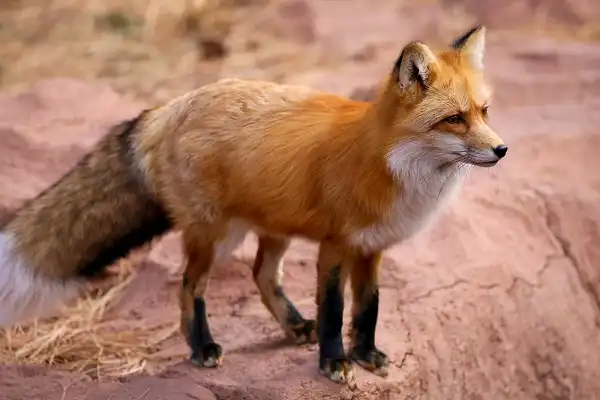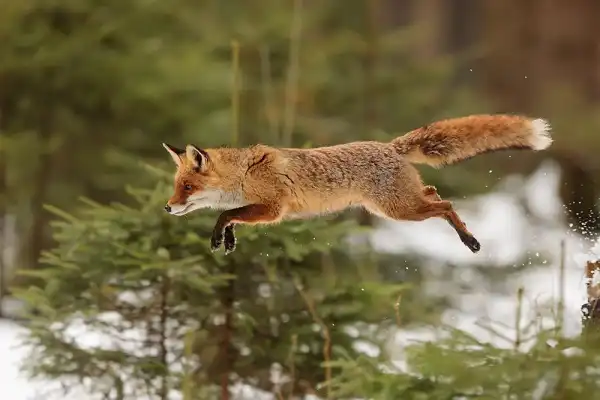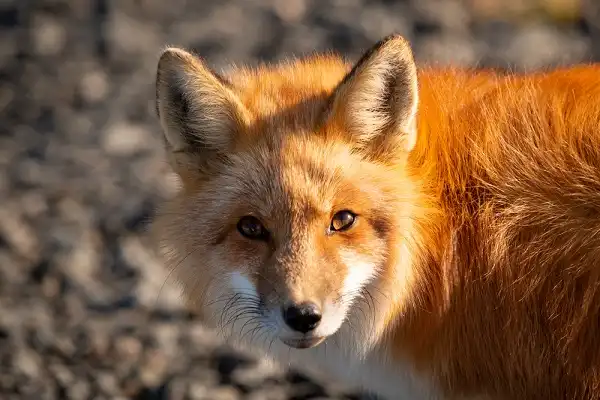Have you ever wondered why the red fox is one of the most recognizable animals in the world? It isn’t just because of its stunning fur coat, but there are many other fascinating aspects to explore when it comes to this versatile mammal. From its remarkable adaptability to its unique behaviors and habits, a closer look at the red fox reveals an animal that is both cunning and captivating. In this blog post, we’ll take a deep dive into what makes these creatures so amazing as well as delve into some of the interesting facts about them. From detailing their physical features to exploring how they survive in different environments, you’re sure to be amazed by all that red foxes have to offer!

Red Fox Description
The red fox is the largest of all true foxes. They are typically reddish-brown in color and have white underparts, black legs, and silver tips on their tails. Their ears are large and pointy, and they have long bushy hair on their face and body which helps them stay warm during winter months. The coat also serves as camouflage by allowing them to blend into its natural environment.
Red Fox Habitat
The red fox is an incredibly adaptable animal, able to survive in a wide variety of habitats across the globe. In North America and Europe, they primarily occupy boreal forests, grasslands, and farmlands. They can also be found in desert regions and even in the Arctic circle. Red foxes have even been known to thrive in urban areas such as cities and suburbs; due to their dexterous nature and resourcefulness, they are able to find enough food from garbage cans or composting bins. Red foxes prefer to make dens near riverbanks or on high ground such as hills or mountains. The den itself typically consists of several interconnected underground tunnels lined with fur or leaves for insulation. These dens provide protection from predators as well as providing a safe place for foxes to give birth and raise their young. In addition to being highly adaptive, red foxes are also skilled hunters – they feed mainly on small mammals such as mice and voles but will also hunt rabbits, birds, lizards, reptiles, insects, and sometimes even amphibians. They are also known to scavenge for food when necessary making them one of the more opportunistic species of foxes.
Red Fox Diet
The red fox’s diet is varied and highly opportunistic, allowing them to survive in a variety of habitats. They primarily feed on small mammals such as mice, voles, rabbits, and birds, but will also hunt lizards, reptiles, insects, and amphibians. Red foxes are also known to scavenge for food when necessary; they search for fruits, eggs, and even vegetation when their preferred prey is scarce. To supplement their diet even further, red foxes have been known to raid garbage cans and composting bins in urban areas. In addition to eating small animals like rodents or birds, red foxes are also capable of making larger kills. In the wild, they can take down animals like deer or lambs if they find them alone or relatively weak. Red foxes have adapted well to human settlements as well; oftentimes taking advantage of pet food left outside for cats or dogs. They are also able to eat agricultural crops such as grains which can help them survive during leaner times by providing a more dependable food source than hunting smaller animals. Overall the red fox has a very diverse diet which allows it not only to survive but also thrive in different environments around the world- from deserts and mountains to cities and suburban areas!

Red Fox Size
The red fox is a medium-sized animal that can vary greatly in size depending on its location. In North America, adults typically measure between 19 and 36 inches (48 to 91 cm) in body length; with the tail being around 12 to 16 inches (30 to 41 cm) long. This can increase further in northern regions of the continent, with some specimens reaching up to 39 inches (99 cm) including their tails. In other parts of the world, red foxes can be even larger; some individuals have been recorded in Siberia measuring up to 45 inches (115 cm) from nose to tail tip! Despite this considerable range in size, adult males are usually around 10-20% larger than adult females. Red foxes also tend to weigh anywhere between 8 and 15 lbs (3.5 – 6.8 kg), however heavier specimens have been observed at up to 20 lbs (9 kg).
Red Fox Lifespan
The average lifespan of a red fox in the wild is between 2 and 5 years, although some individuals can live up to 10 years or more. This is largely dependent on their geographical location as well as access to food and shelter. For instance, red foxes living in colder climates may have longer lifespans due to the abundance of food available during winter months, whereas those living in warmer regions may suffer from higher mortality rates due to a lack of resources. Red foxes in captivity generally live much longer than their wild counterparts; some animals have been known to reach the age of 15 or even 20 years old depending on their care and environment. Factors such as diet, exercise, stress levels, and genetics all play a role in determining how long a given individual will survive. In addition to environmental influences, red foxes are also susceptible to infectious diseases which can reduce their lifespan significantly. Rabies and canine distemper are two viral diseases commonly found among fox populations that can cause rapid death if left untreated. To reduce the spread of such ailments, it is important that pet owners keep their animals up-to-date with vaccinations and deworming treatments.
Red Fox Behavior
Red foxes are highly adaptive and generally nocturnal animals, meaning that they are most active during the night. They are also exceptionally territorial and will defend their area from other foxes or intruders. During the day, red foxes can be seen sunning themselves to maintain a comfortable body temperature. In terms of social behavior, red foxes are largely solitary creatures but may form small family groups of up to four individuals when food is plentiful. These groups help the foxes protect their young and provide better chances for survival in areas where resources may be scarce. A dominant male will often take charge of any group, patrolling its territory and ensuring that rival foxes stay away for fear of reprisal. Communication is an important part of red fox life; these animals make a wide range of vocal sounds including barks, growls, squeals, and screams which all have different meanings depending on the situation. Visual communication is also employed through various behavior such as tail raising or rolling around on the ground to show dominance or submission respectively. Red foxes also mark their territory with urine sprays to deter rivals from entering their space.

Red Fox Speed
Red foxes are surprisingly swift animals, capable of reaching speeds of up to 30 miles per hour (48 km/h) when sprinting. They can maintain this speed for distances of up to 400 yards (365 meters). Red foxes are also excellent jumpers and can leap up to 10 feet (3 meters) or more in a single bound, while they have also been recorded to climb trees with relative ease. Their impressive agility and swiftness are attributed to their slender body structure and lightweight fur. Other characteristics such as long legs, sharp claws, and powerful jaws help them keep their balance on uneven terrain and catch prey quickly. In addition, red foxes have strong hind legs that allow them to make quick turns when running from predators or pursuing smaller prey items. The speed at which red foxes travel is also affected by a variety of environmental factors including weather conditions, terrain type, and the availability of food sources. For example, if there is an abundance of food available in an area then red foxes will move faster than usual as they search for more sustenance. Similarly, if the terrain is hilly or rough then the foxes will slow down to avoid injury or fatigue during their hunt.
Red Fox Hunting
Red foxes are excellent hunters, utilizing their keen eyesight, hearing, and sense of smell to locate potential food sources. They use a combination of stalking, pursuit, and pouncing techniques to capture prey ranging from small mammals such as mice and voles to larger birds and even fish. Red foxes are also known to scavenge to supplement their diet when necessary. Red foxes rely heavily on their senses while hunting, using sight to identify potential prey items in the distance and sound to detect underground prey such as moles or burrowing rodents. They will also listen for animals moving through vegetation in order to home in on their target faster. Once the prey is located, red foxes stalk it slowly and silently before making a quick dash for the kill. The red fox’s amazing sense of smell is also used extensively during the hunt; they can pick up the scent of an animal from up to 1 mile (1.6 km) away! This helps them identify potential food sources quickly by wind direction and follow trails left by other animals that have gone before them. Once they identify a source of food, red foxes will circle back around it until they get close enough for a successful ambush or pounce.

Conclusion
Red foxes are highly adapted hunters with impressive speed and agility that enable them to cover large distances quickly and remain balanced on uneven terrain. They rely heavily on their senses of sight, sound, and smell while hunting in order to identify potential prey items and track down other food sources when necessary. Their incredible skills help ensure their survival by providing them with access to a rich variety of food sources that they would otherwise be unable to find or capture. Thus, red fox speed is a critical factor in these animals’ ability to survive in the wild.
Frequently Asked Question


